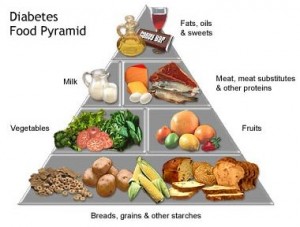Diabetic ketoacidosis (DKA) is “one consequence of severe, out-of-control diabetes mellitus (chronic high blood sugar, or hyperglycemia). In a diabetes sufferer, DKA begins with relative deficiency in insulin. In the most common cases, this is due to failure to take prescribed insulin. Insulin requirements may rise due to physiologic stress that causes release of catecholamines, glucagon, and cortisol. This stress may be emotional or physical, although the most common cause by far is infection (e.g., pneumonia or urinary tract infection). Simply having uncontrolled hyperglycemia may be sufficient to trigger an attack if significant dehydration occurs.”
Diabetic ketoacidosis is much more common in Type 1 diabetes, because the key component of diabetic ketoacidosis is that there is essentially no insulin throughout the body. Because the balance of storing and releasing energy is controlled by the insulin and glucose ratio, the Type 1 sufferers (who can’t produce their own insulin) are severely affected by the disease.
When diabetic ketoacidosis occurs, a number of ill effects can occur as result. If muscles cannot absorb glucose, then their only source of energy is protein. Since amino acids are not stored as raw materials, they must come from proteins that are used for other purposes. Therefore, muscles will begin to break down their own structural proteins and secrete raw amino acids into the blood stream. This, in turn, creates the thin and wasted appearance many people with diabetic ketoacidosis have – because all their muscles are being broken down to create energy.
Also since high levels of plasma glucose are circulating the body, the liver will act as though the body is starving since insulin is low. In such situation, the liver is forced to create fuel for the brain by using triglycerides to make the glucose the brain needs. Because of this, the bloodstream is filled with a lot of glucose that it cannot use, so it begins to spill into the urine – and as it does this a lot of body water goes with it, resulting in dehydration. Since the dehydration worsens the state of the blood and forces water out along with the glucose, it will keep working this vicious cycle to maintain life; until (without treatment) it ultimately leads to coma and death.
As you can see, diabetic ketoacidosis is a very serious, debilitating disease. Without treatment, it will drain your body of glucose, water, and ultimately lead to coma and death. So how do you ensure this doesn’t happen to you? Ultimately, you need to speak with your physician to be sure, and in the meantime take great care of yourself to ensure you’re getting the proper amount of carbohydrates, and therefore glucose, and if you’re a Type 1 diabetic, make sure you are checking your insulin levels regularly to ensure you’re not at risk. And, as always, pay attention to your body – if it feels different or you feel less like yourself for no noticeable reason, make sure to consult with your physician – it may just save your life.



 The Diabetic Food Pyramid, designed by the American Diabetic Association and the American Diabetic Association. Unlike the United States Department of Agriculture (or USDA)’s food guide pyramid, the diabetic food pyramid guides users through groups of foods based on their carbohydrate and protein levels.
The Diabetic Food Pyramid, designed by the American Diabetic Association and the American Diabetic Association. Unlike the United States Department of Agriculture (or USDA)’s food guide pyramid, the diabetic food pyramid guides users through groups of foods based on their carbohydrate and protein levels.

